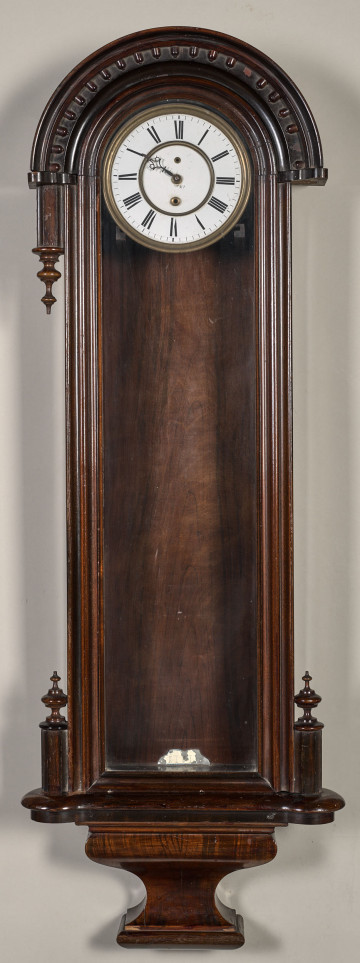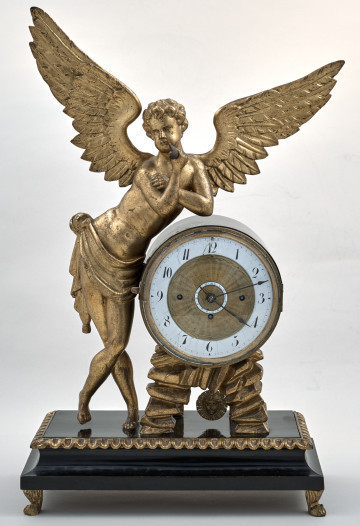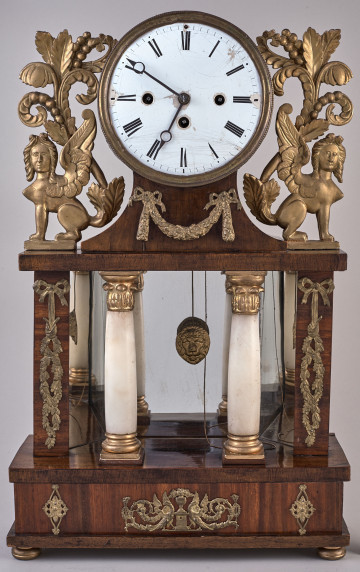
Cabinet clock
19th (?) century
Castle Museum in Łańcut
Part of the collection: Zegary
Wooden cartel clock with gilding, shaped like a lyre with snakes twisting around the arms, crowned with a vase. White-enamelled circular dial with openwork hands and black Arabic numerals. At the start of the 19th century, French clockmaking had a fundamental influence on the forms of timepieces. After the Rococo period with its light, asymmetrical shapes, Classicism was becoming increasingly popular. New decorative motifs appeared, e.g. obelisks, vases, triumphal arches, as well as ancient mythological characters. The most characteristic change in clock casing was the subordination of the clockwork to the case. Cases were almost exclusively made of bronze in the form of fully plastically modelled sculptures and progressively less space was devoted to the clockwork itself. As a result, clocks became an excuse for bronze art. It is worth mentioning that in Poland, in the 2nd half of the 18th century, clockmakers designed their works with French models in mind, however, the cases of their clocks were made by woodcarving artists or carpenters. The presented cartel clock was purchased for the castle collection.
Dimensions
height: 82 cm
Object type
clocks
Technique
gilding, watchmaking
Material
metal, wood
Creation time / dating
Owner
Castle Museum in Łańcut
Identification number
Location / status

19th (?) century
Castle Museum in Łańcut

20th century
Castle Museum in Łańcut

1830 — 1860
Castle Museum in Łańcut
DISCOVER this TOPIC
Museum of King Jan III's Palace at Wilanów
DISCOVER this PATH
Educational path